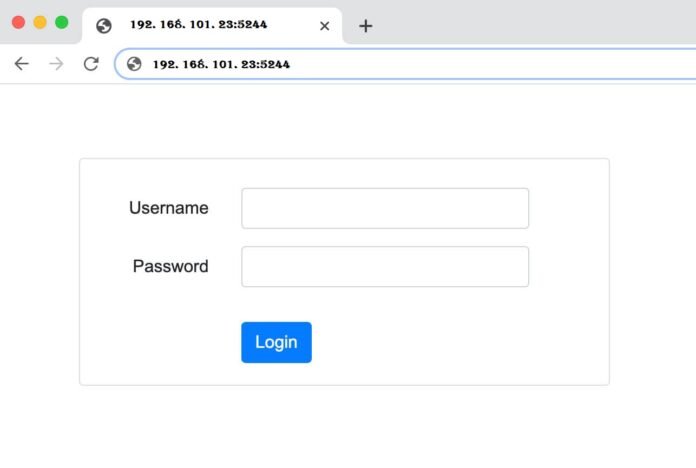The address 192. 168. 101. 23:5244 combines an IP address with a port number, both of which are critical components in the realm of computer networking. To grasp its significance, we must break down its elements and explore their roles in communication, security, and network management. This guide will delve into the structure of IP addresses and ports, explain their applications, and provide insight into how the combination of the two operates within a network.
1. What Is an IP Address?
An Internet Protocol (IP) address is a numerical label assigned to each device connected to a computer network that uses the Internet Protocol for communication. IP addresses play a crucial role in identifying devices and facilitating data exchange over the internet or local networks.
There are two main types of IP addresses:
1.1 IPv4
IPv4 (Internet Protocol version 4) is the most commonly used version of IP addressing. It uses a 32-bit address scheme allowing for approximately 4.3 billion unique addresses. The format consists of four sets of numbers (octets) separated by periods, such as 192. 168. 101. 23:5244.
1.2 IPv6
Due to the limitations in the number of unique IPv4 addresses, IPv6 was developed, using a 128-bit addressing scheme, allowing for a vast number of unique IP addresses. While it’s becoming more common, IPv4 remains widely in use today.
1.3 Private vs Public IP Addresses
- Public IP addresses are used for devices that are directly connected to the internet.
- Private IP addresses (like 192. 168. 101. 23:5244) are reserved for internal use within private networks. These addresses cannot be routed over the public internet but are essential for local area network (LAN) communications.
The IP address 192.168.101.23 is a private IP address falling within the reserved IP range 192.168.0.0 to 192. 168. 101. 23:5244, typically used in home, office, or enterprise networks.
2. What Is a Port?
In networking, a port is a logical endpoint used to differentiate types of traffic sent to the same IP address. Ports allow different services or applications to run simultaneously on a single device by directing the correct traffic to the appropriate process.
- A port number is a 16-bit number ranging from 0 to 65535.
- There are well-known ports (0-1023) commonly used for standard services like HTTP (Port 80) and FTP (Port 21).
- Registered ports (1024-49151) are used for specific services registered with the Internet Assigned Numbers Authority (IANA).
- Dynamic or private ports (192. 168. 101. 23:5244) are often used for temporary communications, usually by client-side applications.
In 192.168.101.23:5244, 5244 is the port number. This means traffic directed to port 5244 on the device with the IP address 192.168.101.23 is for a specific service or application.
3. What Is 192. 168. 101. 23:5244?
The combination of 192.168.101.23:5244 refers to a specific endpoint in a local network where an IP address (192.168.101.23) is paired with a port (5244). This IP address is part of the private IPv4 range, meaning it is likely used within a local area network (LAN) or an intranet and not accessible directly from the public internet.
The port number 5244 could be tied to a specific service, application, or software running on the device with the IP address 192.168.101.23. Understanding which service uses this port requires inspecting the network configuration or referencing the relevant application.
3.1 Port 5244: Common Usage
Port numbers can be associated with many different types of software, but without additional context, it’s challenging to pinpoint exactly which service might be running on 5244. In general, port numbers above 49152 are often used for dynamic or private purposes, meaning the application using port 5244 could be custom, temporary, or specific to an organization’s setup.
4. How Devices Communicate Using IP and Port Numbers
When two devices communicate over a network, they use IP addresses to identify each other and port numbers to identify the specific service or process they wish to connect with.
Here’s an overview of how the communication process works:
4.1 Client-Server Model
Most network communications are based on a client-server model:
- The client initiates the communication by sending a request to the server’s IP address and port number.
- The server listens on a specific port for incoming requests. For example, if you are using a web browser, it may connect to the server’s IP address at port 80 (HTTP) or port 443 (HTTPS).
In the case of 192. 168. 101. 23:5244, a client device within the same network could connect to this IP address and send requests to port 5244. The device at 192.168.101.23 would need to have a process or service actively listening on port 5244 to handle the incoming traffic.
4.2 Transport Layer Protocols: TCP and UDP
Communication between devices happens through protocols such as TCP (Transmission Control Protocol) and UDP (User Datagram Protocol):
- TCP ensures reliable, ordered, and error-checked delivery of data, making it suitable for applications where data integrity is critical, such as web browsing or file transfers.
- UDP, on the other hand, is faster but less reliable, making it suitable for real-time applications like video streaming or gaming.
Whether 192. 168. 101. 23:5244 uses TCP or UDP depends on the application or service tied to port 5244.
5. How to Access 192. 168. 101. 23:5244
Accessing a service at 192.168.101.23:5244 depends on several factors, including network configuration and the specific service listening on the port. Follow these steps to connect to this address:
5.1 Check Network Connectivity
Before attempting to access the device, ensure that you are connected to the same local network (LAN). As 192.168.101.23 is a private IP address, you must be within the same network or use a method like VPN (Virtual Private Network) to gain access remotely.
5.2 Use Appropriate Software
You’ll need to use software compatible with the service running on port 5244. For example:
- If the port is being used for an HTTP service, you can access it through a web browser by typing 192. 168. 101. 23:5244 in the address bar.
- If it’s being used for a different service like FTP or SSH, you’ll need to use the corresponding client application.
5.3 Firewall and Security Considerations
Ensure that firewalls or security settings allow traffic to and from port 5244. Both the device you’re connecting from and the one running the service may have firewall rules that block access to specific ports.
6. Troubleshooting Issues with 192. 168. 101. 23:5244
If you encounter issues while attempting to connect to 192. 168. 101. 23:5244, consider the following troubleshooting steps:
6.1 Ping the IP Address
Use the ping command to verify that the device at 192. 168. 101. 23:5244 is reachable:
ping 192.168.101.23
If you receive a response, it means the device is active on the network.
6.2 Check Port Availability
Ensure that port 5244 is open and a service is listening on it. You can use tools like Telnet or Netcat to check if the port is open:
telnet 192.168.101.23 5244
If the connection is successful, it confirms that the port is open and accessible.
6.3 Inspect Firewall Settings
Ensure that both the local and remote firewalls allow traffic on port 5244. Firewalls are often configured to block ports to improve security, so you may need to adjust the settings.
6.4 Examine Service Logs
If the service running on 192. 168. 101. 23:5244 is not responding, check the logs of the application or service tied to port 5244. It may reveal issues such as misconfiguration or resource limitations.
7. Security Implications of Exposing Ports
While ports are essential for network communication, exposing unnecessary ports, especially in a public-facing environment, can be a security risk. Unsecured ports can be exploited by attackers to gain unauthorized access to sensitive data or systems.
7.1 Best Practices for Securing Ports
- Only open necessary ports, and ensure they are protected by a firewall.
- Use encryption (such as TLS) when transmitting sensitive data.
- Monitor network traffic for unusual activity on open ports.
- Regularly update software and services to patch vulnerabilities.
In the case of 192. 168. 101. 23:5244, the private IP address provides some security by limiting access to the local network. However, it’s still crucial to ensure that only authorized users and devices can access the service on port 5244.

